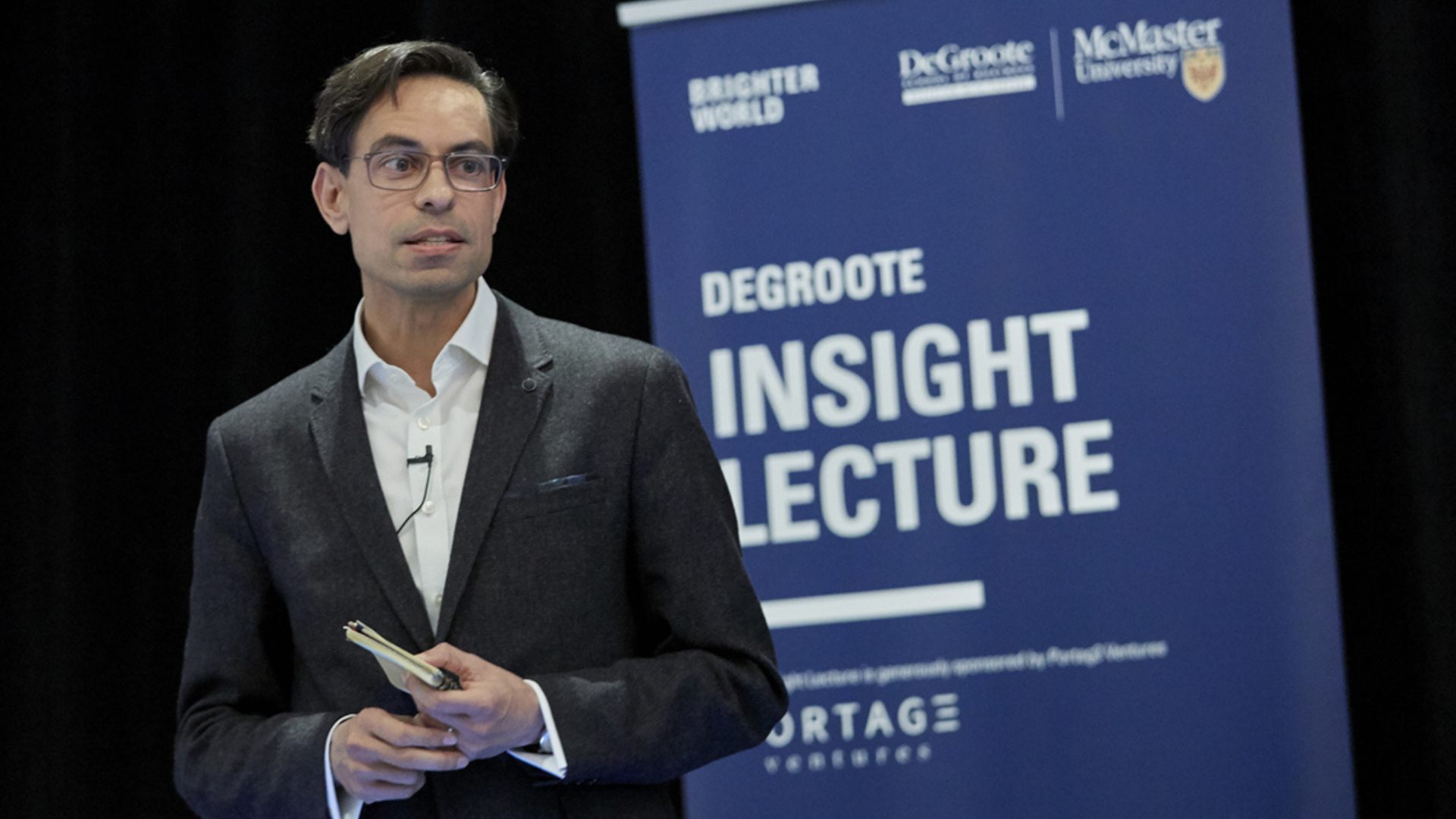ALUMNI STRATEGIC PLAN | OPERATIONAL EXCELLENCE
The investments building Canada’s future
November 19, 2025 ·
Contributed by: Izabela Shubair

Ports, power and partnerships—Canada’s infrastructure landscape is evolving to meet the country’s next generation of challenges and opportunities. The 2025 federal budget underscored the shift, with major investments in trade corridors, clean energy and critical minerals. Together with the newly established Major Projects Office (MPO), designed to advance major developments and streamline federal approvals, these efforts signal a coordinated push to strengthen Canada’s economic resilience.
Helping translate national priorities into action is John Casola, chief investment officer at the Canada Infrastructure Bank (CIB). The federal Crown corporation partners with the public and private sectors and Indigenous communities to finance nation-building, revenue-generating projects. It has committed nearly $18 billion towards new infrastructure.
A recognized leader in Canada’s infrastructure sector, Casola knows what it takes to move complex projects forward.
“What’s different about what we do is we are trying to solve specific problems, and we were created to take risks,” he says of the CIB. “Our deals are highly structured. We’re an impact investor, so in our return on investment (ROI), R is impact, not dollars. That bespoke approach is working really well. We’ve closed 114 deals. The momentum is real and there’s lots to do.”
Structured deals, real impact
The CIB’s approach to solving large-scale problems fills a gap that helps spur economic development and is evident in some of Canada’s most ambitious infrastructure projects.
Ports
In Quebec, CIB is in the midst of investing in expanding the Contrecoeur Terminal, which will boost the Port of Montreal’s handling capacity by 40 per cent. On the west coast, its contribution to Vancouver’s Roberts Bank Terminal 2 will increase the port’s total container capacity by 30 per cent. Casola notes that these expansions are complex and costly but essential for Canada to remain competitive globally.
“Sufficient ports capacity is the key to facilitating increased trade with Asia from Vancouver and Europe from Montreal,” says Casola, who recently graduated from McMaster University’s Chartered Director program (C.Dir. ’25).
“We can talk a big game about agreements, but without the physical port facilities, trade is not going to happen.”
Clean Power
Moving inland, CIB supports the transition from fossil fuels to clean power while keeping electricity affordable. In provinces like Alberta and British Columbia, for example, investments in major transmission lines are connecting renewable energy to industrial regions. This allows energy-intensive facilities, such as natural gas plants, manufacturing zones and AI data centres, to switch to clean power.
“The largest single sector for deployment of our capital is in the clean energy space,” says Casola. “For example, AI data centres are very thirsty for power, and we need them for data sovereignty. It would be a wasted opportunity if we didn’t power them with clean energy.”
Critical Minerals
In areas rich in critical minerals, such as northern Ontario’s Ring of Fire or Quebec’s Plan Nord, Casola sees opportunities for targeted investing. Global tensions, including the U.S.–China dispute over the export restrictions on certain critical minerals, he says, highlight the strategic importance of these resources.
“There are no roads to the Ring of Fire, or power there,” he says. “We are working on models to open it up because one mine can’t shoulder all the costs alone. Whoever funds the infrastructure has to bet that other miners will come and we’ll create gross domestic product (GDP) growth where we didn’t have it before.”
EV Charging Infrastructure
Sustainability is a theme across many of these investments. Because consumers are hesitant to buy electric vehicles (EVs) due to limited charging infrastructure—and providers struggle to finance new stations—the CIB is working to address the shortfall. It structures loan repayment around usage milestones to make these projects financially workable.
That strategy underpins its partnership with FLO, an EV charging systems designer and operator, which enabled the installation of 1,900 public fast-charging ports at nearly 400 sites across Canada.
“This approach addresses the market need,” Casola says. “Providers value it because they can’t raise money otherwise without the guarantees that traditional lenders need. It’s an example of how we share risk, and how we can be innovative and creative.”
Partnering to finance a new era
Partnerships are central to Canada’s infrastructure development. Casola emphasizes that projects rarely succeed as solo efforts. Federal and provincial governments, Indigenous communities and private investors all need a seat at the table.
“Each party has its own motivations and needs,” says Casola. “Establishing clarity of purpose is key. What are we trying to achieve here? What are everyone’s needs? Then, you conduct yourself with integrity and honesty, collaborate and try not to push risk where it doesn’t belong.”
One example of this collaborative approach is the CIB’s engagement with Indigenous communities. Many large-scale projects, particularly transmission lines and resource developments, traverse Indigenous territories. Early and meaningful participation ensures that projects respect local priorities and create economic opportunities, while also smoothing regulatory and social hurdles.
“The importance of Indigenous participation in deals, I think people take it for granted,” Casola says. “The best thing to do is work together and come up with creative methods to make everybody comfortable, get the capital structure in place that accommodates everybody, and that will spur the development of those projects.”
The bank has also committed at least $1 billion in financing for projects that reduce the infrastructure gap in Indigenous communities and promote economic participation.
Coordinating a path forward
A more recent partnership is with the MPO, which plays a key role in advancing complex projects. Beyond connecting governments, investors and developers, the MPO helps navigate regulatory hurdles.
Casola says the MPO’s mandate fosters a more disciplined framework for public investment, encouraging the federal government to adopt an active, accountable approach to funding projects and generating returns over time.
“There is a tendency to go to Ottawa with your hand out for big projects,” he says. “The MPO is taking a different approach. Why wouldn’t the Canadian government take an equity stake? If we’re going to invest, there should be accountability. Taxpayers deserve to get their money back, even if it takes longer to see returns.”
Looking ahead, Casola, a panellist for the 2025 edition of DeGroote’s Insight Lecture, hopes for a more pragmatic and coordinated method to building Canada’s future. He reiterates that too often, provinces, municipalities and developers delay projects while seeking federal grants that may never materialize. Meanwhile, costs continue to rise.
“People need to get realistic about the price of infrastructure,” Casola says. “We need to be clever in our structuring and utilize all the tools we have in the best possible way. Let’s actually focus on solving the problem in ways that make sense.”



